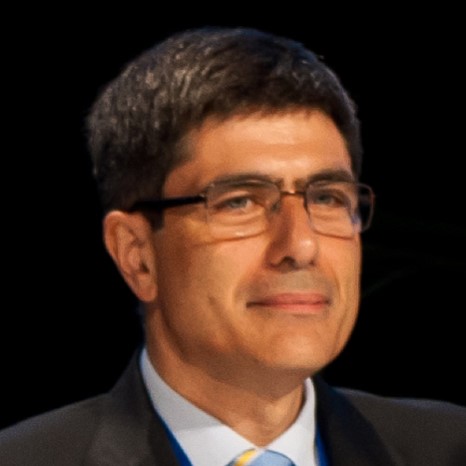- Details
The manuscript "Channel Parameter Acquisition in MIMO LOS Systems for High Capacity Microwave Links" has been accepted for publication in Physical Communication Journal (50 days' free access).
The authors are:
Pietro Savazzi , Anna Vizziello (TLC&RS lab), Davide Benfatto, Cesare Salvaneschi (siae microelettronica).
Abstract: Due to the increased traffic load, next generation wireless communication standards require to increase the capacity of current point-to-point (PtP) wireless backhaul links in the microwave frequency bands. Multiple-input, multiple-output (MIMO) systems are essential to multiply the link capacity, and such solutions have been already presented in the recent literature as a promising technology to increase the data rate, for line-of-sight (LOS) wireless PtP connections. In this paper, we focus on the initial acquisition scheme of a MIMO 2x2 architecture for microwave M-ary quadrature amplitude modulation (M-QAM) transceivers, based on two completely independent radio frequency (RF) chains which use different local oscillators (LOs). During the acquisition phase, a 4-QAM training preamble is considered with a joint algorithm for estimating both the MIMO gains for the interference cancellation and the timing error for initializing the clock recovery loop. A phase recovery closed loop scheme is jointly used during the acquisition phase, and the same algorithm may be used for phase error correction when the receiver switches to the tracking mode. Simulations prove the effectiveness of the proposed solutions, by considering both qualitative and quantitative results.
- Details
Prof. Dell'Acqua visited the National Institute of Technology Karnataka (NITK), Mangalore, India, where he taught a Remote Sensing course in November 2017; his host prof. Lal returned the visit in November 2018, illustrating his cutting-edge research work to Remote Sensing students at the University of Pavia. This exchange of visits was instrumental in triggering a network of joint research efforts between the University of Pavia, the NITK, and other Italian and Indian academic institutions in the field of remote sensing and Earth observation.
In this context, fresh research results were obtained on the exploitation of sequence information (as opposed to spectral and spatial information) in multi-band data with specific reference to hyperspectral data. This research was conducted in the framework of a cooperation between the Remote Sensing Group in Pavia and the Department of Electronics and Communication Engineering at the International Institute of Information Technology Bhubaneswar, India. Results were submitted as a research paper to the International Journal of Remote Sensing, and have gained approval for publication after peer reviewing. We are proud to announce that the paper is now published as:
Patro, R. N., Subudhi, S., Biswal, P. K., & DellAcqua, F. (2019). "Dictionary-based classifiers for exploiting feature sequence information and their application to hyperspectral remotely sensed data"
International Journal of Remote Sensing
https://doi.org/10.1080/01431161.2019.1577580
The cooperation among Indian and Italian research groups continues, and fresh results are expected soon.
- Details
Professor Paolo Gamba has been awarded the certificate of "Excellence Reviewer of Remote Sensing of Environment 2018" today at the American Geoscience Union in Washington D.C. Professor Gamba has been selected by the Journal as one of its top 10 reviewers.
- Details
 Our colleague and coordinator prof. Paolo Gamba has been elected President of the IEEE Geoscience and Remote Sensing Society for years 2019-2020, with effect from 1° January 2019. We all congratulate him for this prestigious achievement!
Our colleague and coordinator prof. Paolo Gamba has been elected President of the IEEE Geoscience and Remote Sensing Society for years 2019-2020, with effect from 1° January 2019. We all congratulate him for this prestigious achievement!
- Details
The manuscript "Beamforming Galvanic Coupling Signals for IoMT Implant-to-Relay Communication" has been accepted for publication in IEEE Sensors Journal (https://ieeexplore.ieee.org/xpl/RecentIssue.jsp?punumber=7361) and it will be included in the Special Issue on Next-Generation Smart Body Sensor Networks (BSN): from Autonomic Body Sensors to Cognitive Body Sensor Network Ecosystems
The authors are:
Stella Banou, Meenupriya Swaminathan, Guillem Reus Muns, Kaushik R. Chowdhury (Northeastern University, Boston, MA, USA), Farzana Kulsoom , Pietro Savazzi , Anna Vizziello (TLC&RS lab), Davy Duong (Temple University, Philadelphia, PA, USA)
Abstract—Implants are poised to revolutionize personalized healthcare by monitoring and actuating physiological functions. Such implants operate under challenging constraints of limited battery energy, heterogeneous tissue-dependent channel conditions and human-safety regulations.